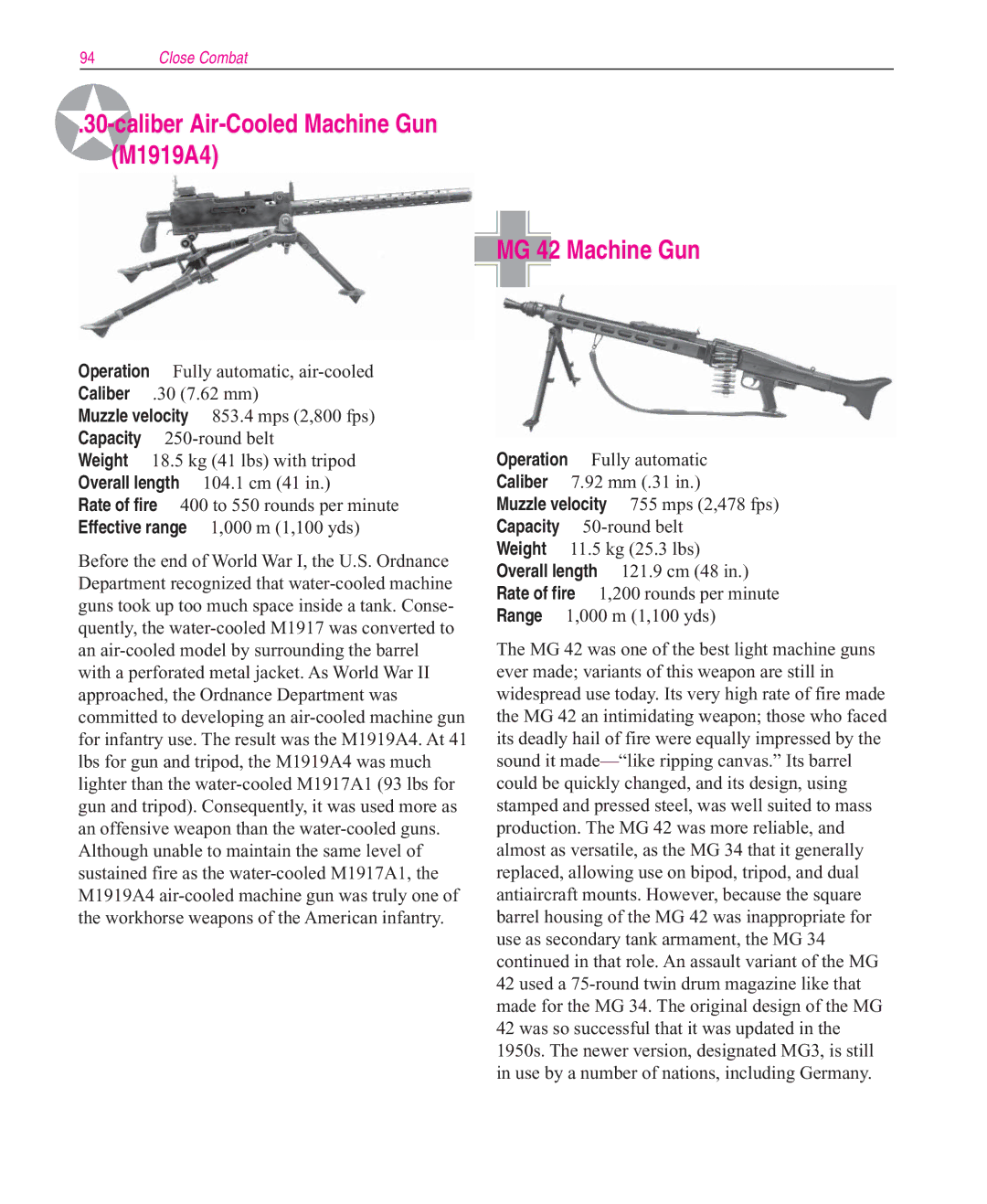Operation Fully automatic, air-cooled Caliber .30 (7.62 mm)
Muzzle velocity 853.4 mps (2,800 fps) Capacity 250-round belt
Weight 18.5 kg (41 lbs) with tripod Overall length 104.1 cm (41 in.)
Rate of fire 400 to 550 rounds per minute Effective range 1,000 m (1,100 yds)
Before the end of World War I, the U.S. Ordnance Department recognized that water-cooled machine guns took up too much space inside a tank. Conse- quently, the water-cooled M1917 was converted to an air-cooled model by surrounding the barrel with a perforated metal jacket. As World War II approached, the Ordnance Department was committed to developing an air-cooled machine gun for infantry use. The result was the M1919A4. At 41 lbs for gun and tripod, the M1919A4 was much lighter than the water-cooled M1917A1 (93 lbs for gun and tripod). Consequently, it was used more as an offensive weapon than the water-cooled guns. Although unable to maintain the same level of sustained fire as the water-cooled M1917A1, the M1919A4 air-cooled machine gun was truly one of the workhorse weapons of the American infantry.
Operation Fully automatic
Caliber 7.92 mm (.31 in.)
Muzzle velocity 755 mps (2,478 fps)
Capacity 50-round belt
Weight 11.5 kg (25.3 lbs)
Overall length 121.9 cm (48 in.)
Rate of fire 1,200 rounds per minute
Range 1,000 m (1,100 yds)
The MG 42 was one of the best light machine guns ever made; variants of this weapon are still in widespread use today. Its very high rate of fire made the MG 42 an intimidating weapon; those who faced its deadly hail of fire were equally impressed by the sound it made—“like ripping canvas.” Its barrel could be quickly changed, and its design, using stamped and pressed steel, was well suited to mass production. The MG 42 was more reliable, and almost as versatile, as the MG 34 that it generally replaced, allowing use on bipod, tripod, and dual antiaircraft mounts. However, because the square barrel housing of the MG 42 was inappropriate for use as secondary tank armament, the MG 34 continued in that role. An assault variant of the MG
42used a 75-round twin drum magazine like that made for the MG 34. The original design of the MG
42was so successful that it was updated in the 1950s. The newer version, designated MG3, is still in use by a number of nations, including Germany.

